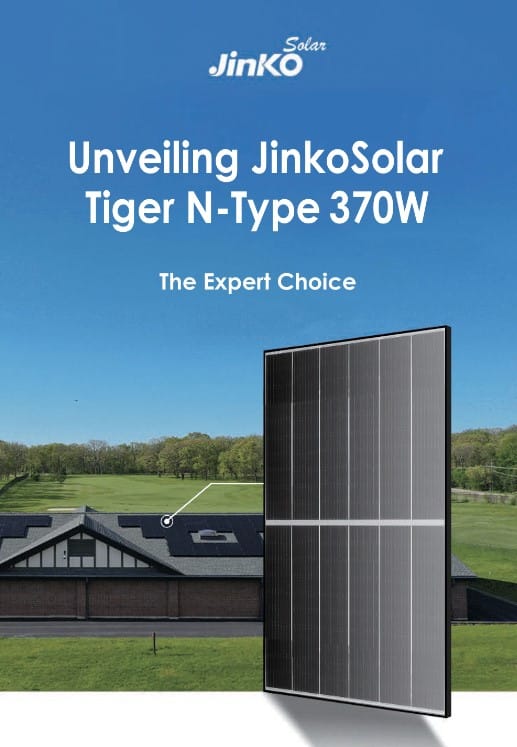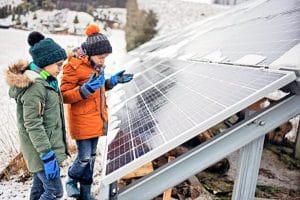JinkoSolar declared that the efficiency of its 182-mm N-type TOPCon module had reached 23.86%. TÜV Rheinland, one of the top testing service providers in the world, independently verified the outcome according to internationally accepted safety and quality standards.
JinkoSolar’s 182 mm N-type module’s maximum solar conversion efficiency reached 23.86%, breaking the previous record of 23.53% for an N-type module -also set by JinkoSolar, in July 2021. It followed the record of maximum solar conversion efficiency of 26.1% recently set by its 182 mm and above large-size monocrystalline silicon TOPCon solar cell.
JinkoSolar Co., Ltd.’s Chief Technology Officer, Dr Hao Jin, stated:
“We are pleased to make another breakthrough in module conversion efficiency, leveraging our accumulated experience and continuous efforts in N-type technology R&D and mass production. It is both a recognition and an incentive for our R&D capabilities. We will drive industrial progress through constant technical upgrades in product structure, materials and processes, catering to clients’ demands for highly efficient and reliable N-type products. As the advantages of N-type products are further recognised by the market, we are confident to lead the industry with increasing penetration and cost-effective performance.”
“The module adopted JinkoSolar’s latest TOPCon cell technology and advanced welding and packaging technology and achieved a conversion efficiency of 23.86% for the first time for two mm2 above large-size solar modules.”
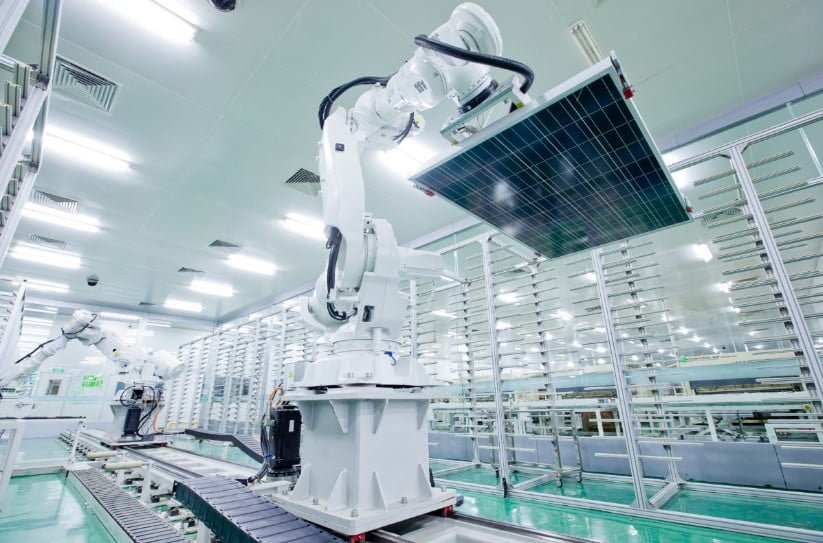
“The advanced welding and packaging technology effectively reduces the internal resistance loss of the module while significantly improving conversion efficiency. In addition, this lab result has the practical foundation to be introduced into mass production and technically set the direction for mass production of subsequent advanced products.”
JinkoSolar’s Tiger Neo at a glance
The TOPCon cell uses a cutting-edge and highly effective passivation contact technology, a micro-nano tunnelling oxide layer, and a functional structure made of the laminated microcrystalline silicon film and carrier selection. This new structure demonstrates a two-way improvement in electrical conductivity and passivation performance, leading to significant cell conversion efficiency and power output increases. With a maximum limit of 28.2% to 28.7%, the tunnel oxide layer’s structure further minimises subsurface recombination, enhancing cell conversion efficiency.
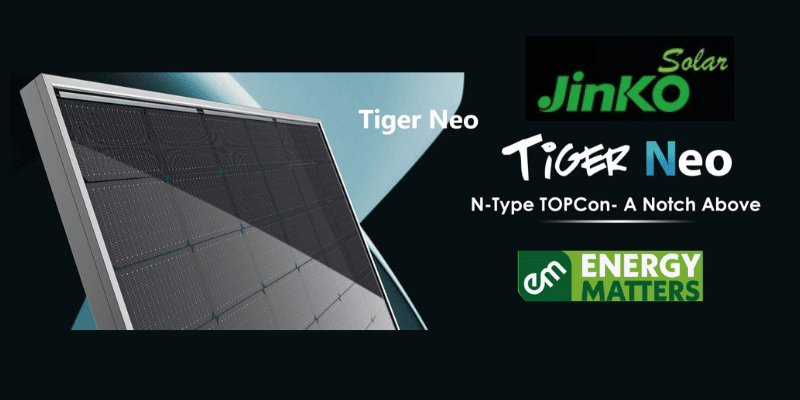
In addition, the TOPCon cell requires significantly more silver in the metallisation than passivated emitter rear contact (PERC)—roughly 130–150 mg per piece as opposed to 85 mg with PERC—which raises cell prices even further. Another issue is the expense of human resources, which is more for TOPComore challenging and harder to control than HJT because of the latter’s intricate nine or even ten production procedures. Leading PERC cell manufacturers are still working on TOPCon despite these challenges.
TOPCon: PERC cell technology goes beyond
The term “Tunnel Oxide Passivated Contact” is known as TOPCON, which is hailed as the next advancement in solar cell technology after N-type and PERC. Researchers from the Fraunhofer Institute for Solar Energy Systems in Germany introduced this unique architecture in 2013, and mainstream Chinese manufacturers have used it since at least 2019.
Compared to brand-new manufacturing technology, these cell enhancements on PERC cells are very simple to achieve. To absorb extra light that may have passed through the initial cell surface, PERC adds a passivated layer to the rear of regular solar cells. TOPCon uses the same PERC film, and an ultra-thin oxide layer is added to it as an additional barrier to keep out stray light.
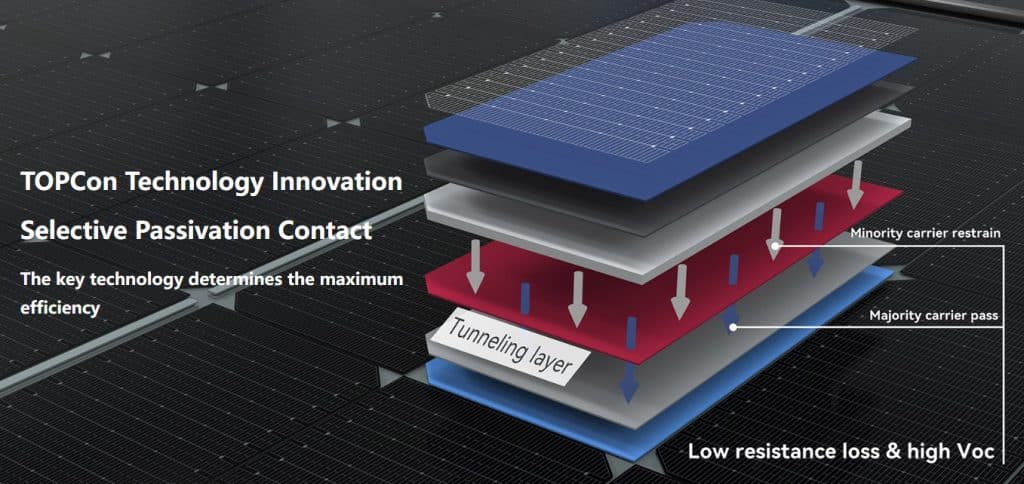
PERC cell technology
In PERC solar cells, which stand for Passivated Emitter and Back Cell or Passivated Emitter and Rear Contact, the cell’s rear is covered with a dielectric passivation layer to increase the amount of sunlight that can be absorbed and converted into energy.
N-type vs P-type cell technology
The number of electrons is the primary distinction between p-type and n-type solar cells. In a p-type cell, boron, an element with fewer electrons than silicon, is doped into the silicon wafer. The cell becomes positively charged as a result. Phosphorus, which has one extra electron than silicon, negatively charges the cell.
More efficient results are produced by N-type cells than by p-type cells. Unlike their p-type cells, they are likewise not impacted by light-induced deterioration.
About JinkoSolar Holding Co., Ltd.
JinkoSolar Holding Co., Ltd. (JinkoSolar, NYSE: JKS), a Chinese manufacturer, is one of the world’s largest solar module manufacturers. JinkoSolar distributes its solar products and sells its solutions and services to a diversified international utility, commercial and residential customer base in China, the United States, Japan, Germany, the United Kingdom, Chile, South Africa, India, Mexico, Brazil, the United Arab Emirates, Italy, Spain, France, Belgium, Netherlands, Poland, Austria, Switzerland, Greece and other countries and regions.
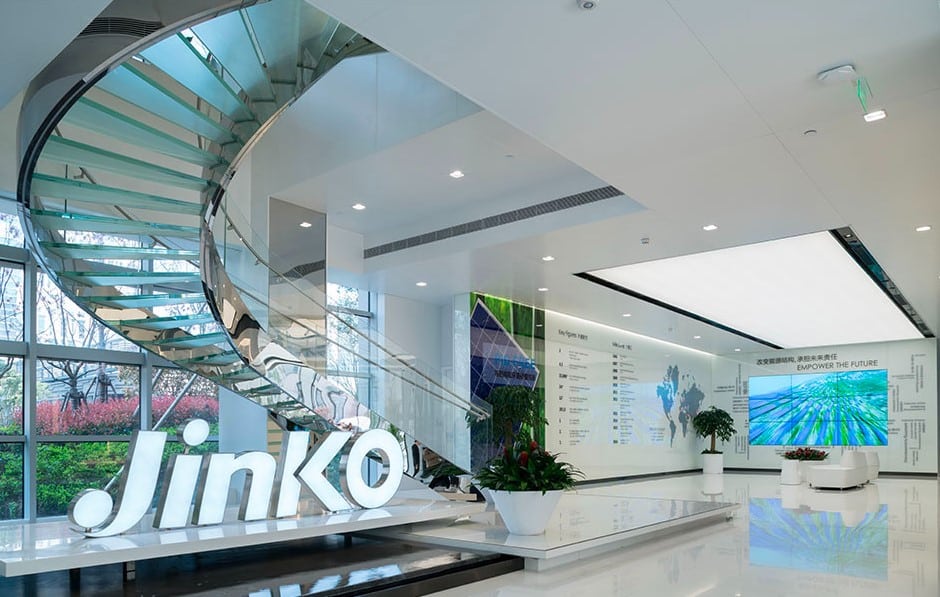
JinkoSolar has 14 productions facilities globally, 21 overseas subsidiaries in Japan, South Korea, Vietnam, India, Turkey, Germany, Italy, Switzerland, the United States, Mexico, Brazil, Chile, Australia, Canada, Malaysia, UAE, and Denmark, and global sales teams in China, the United States, Canada, Germany, Switzerland, Italy, Japan, Australia, Korea, India, Turkey, Chile, Brazil, Mexico and Hong Kong, as of September 30, 2022.
Energy Matters can connect you with our trusted local solar installers in Brisbane, who will provide up to 3 FREE quotes for your home and business solar energy system. Complete our quick quiz and begin your solar journey today!

















